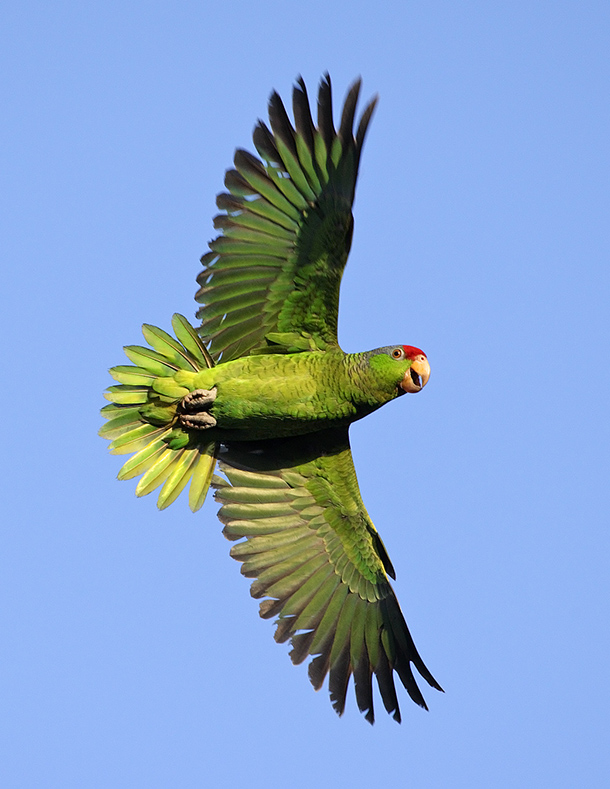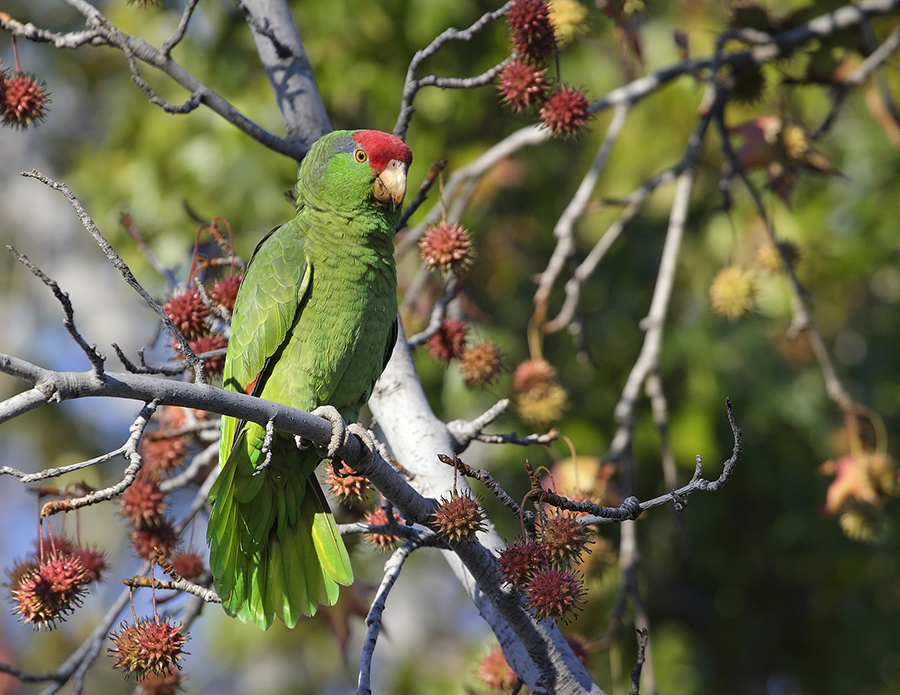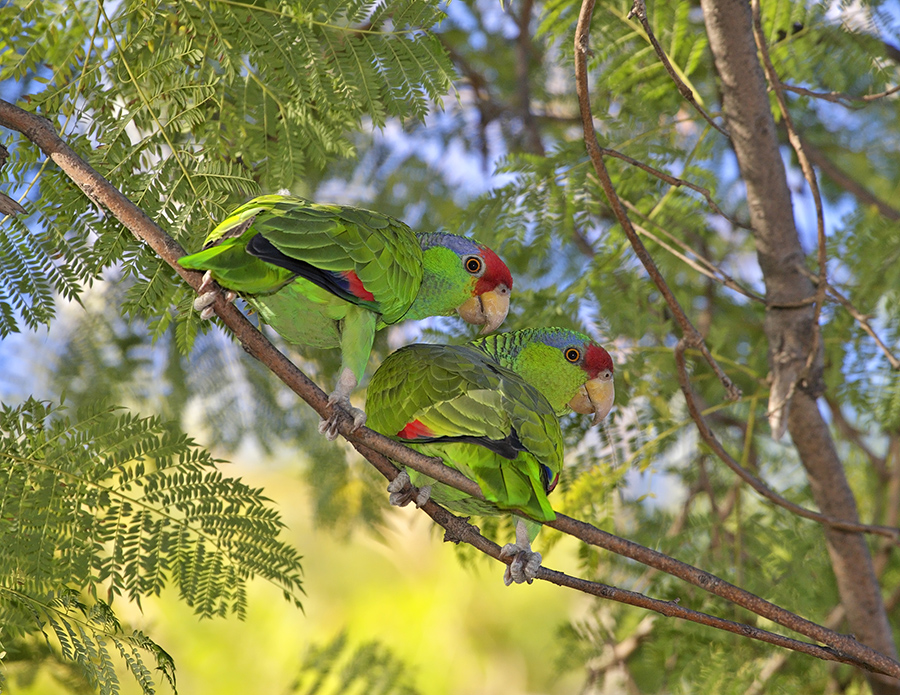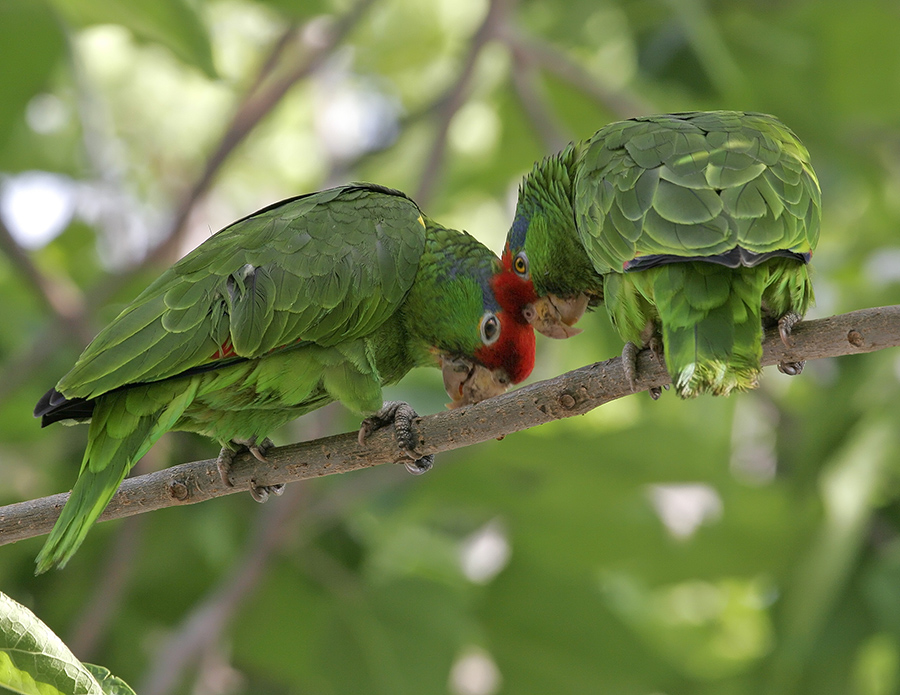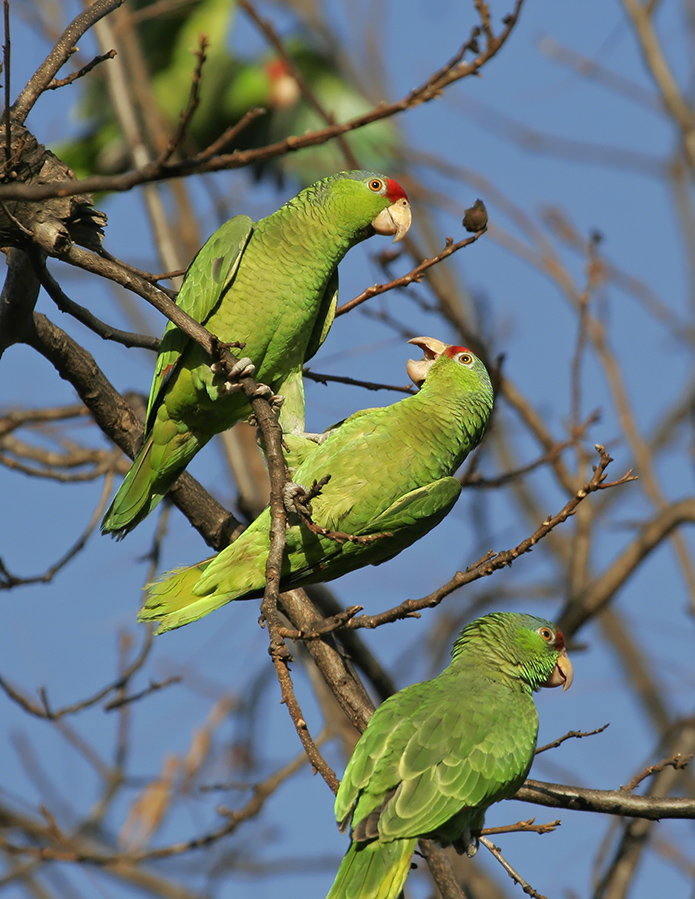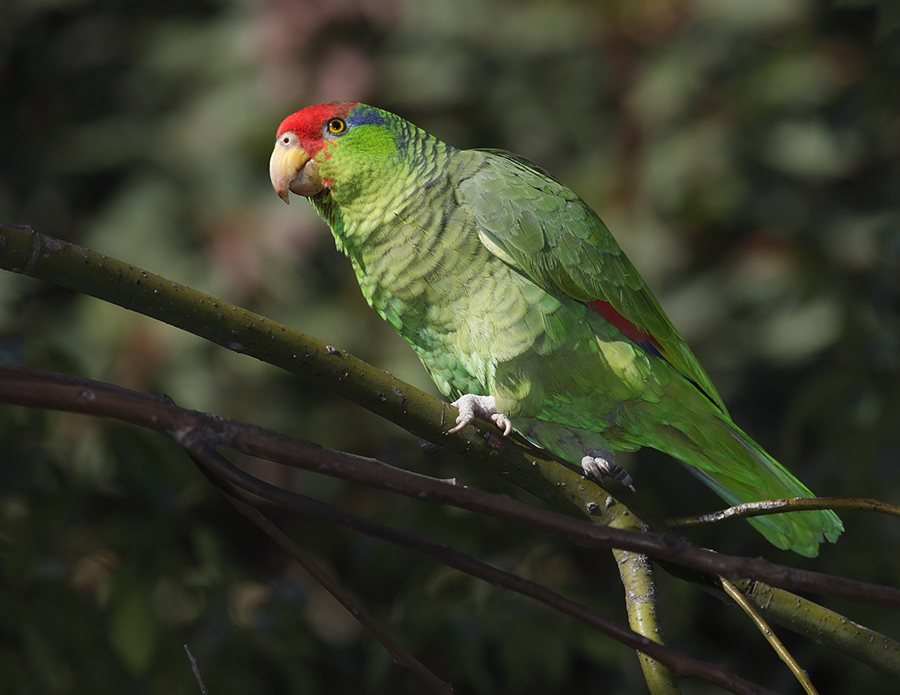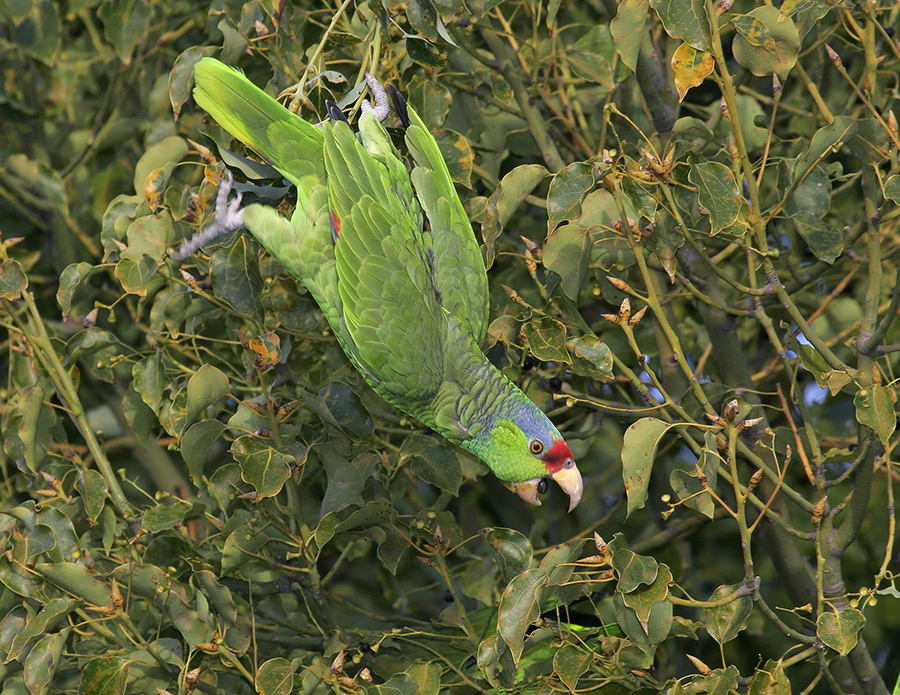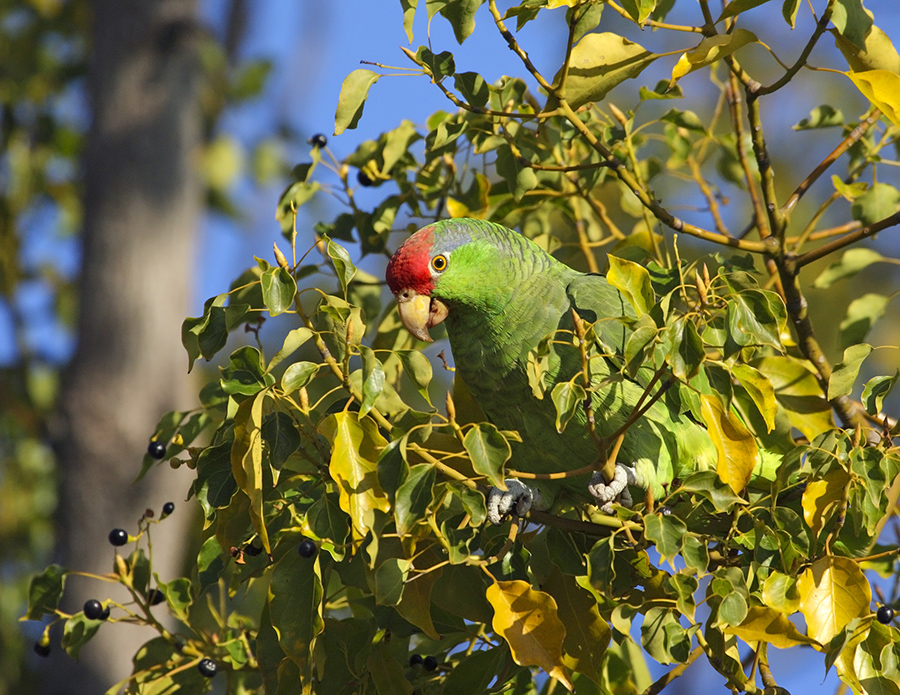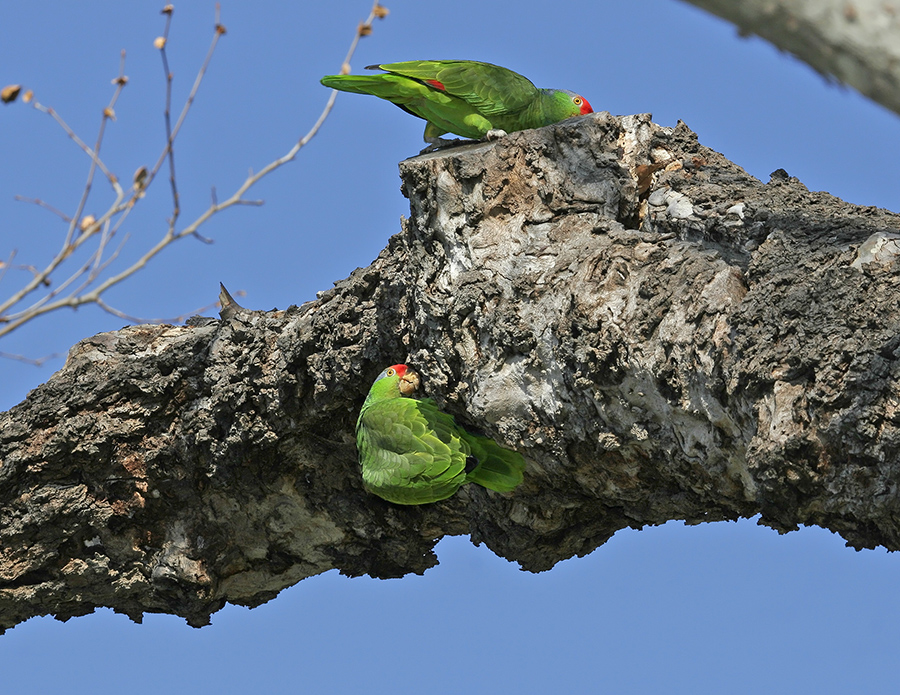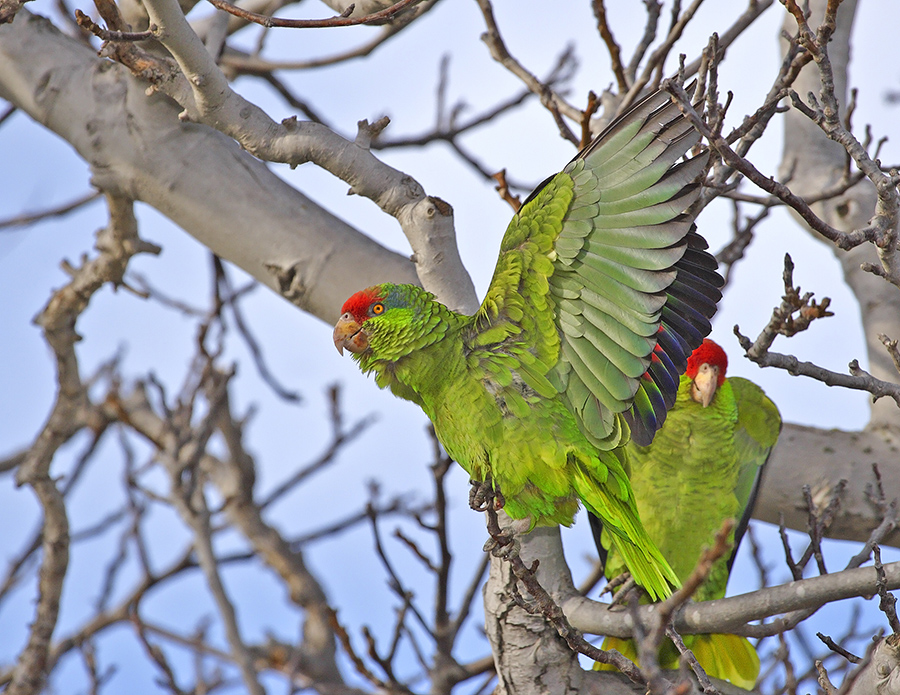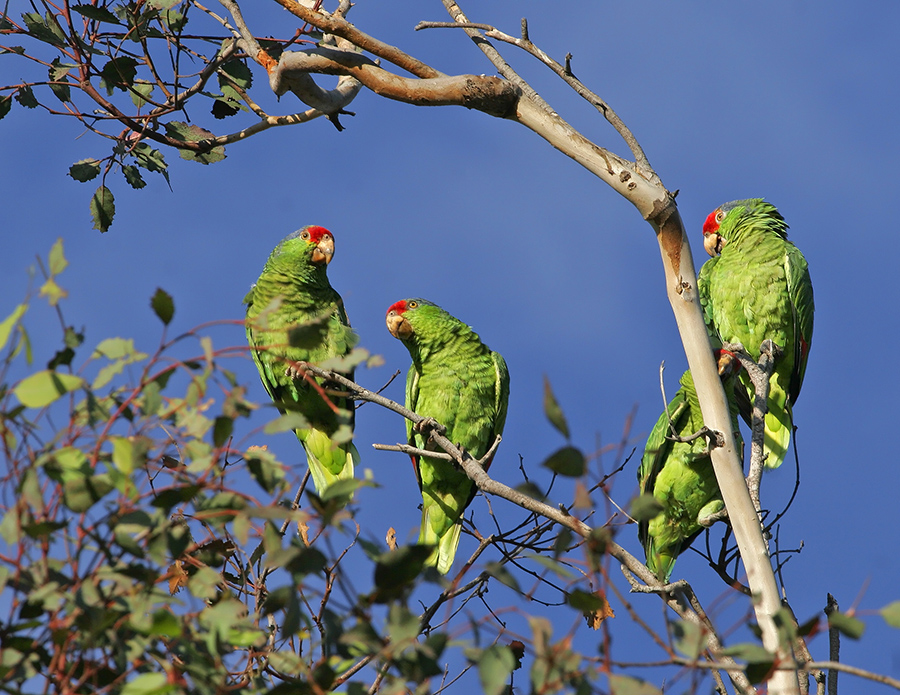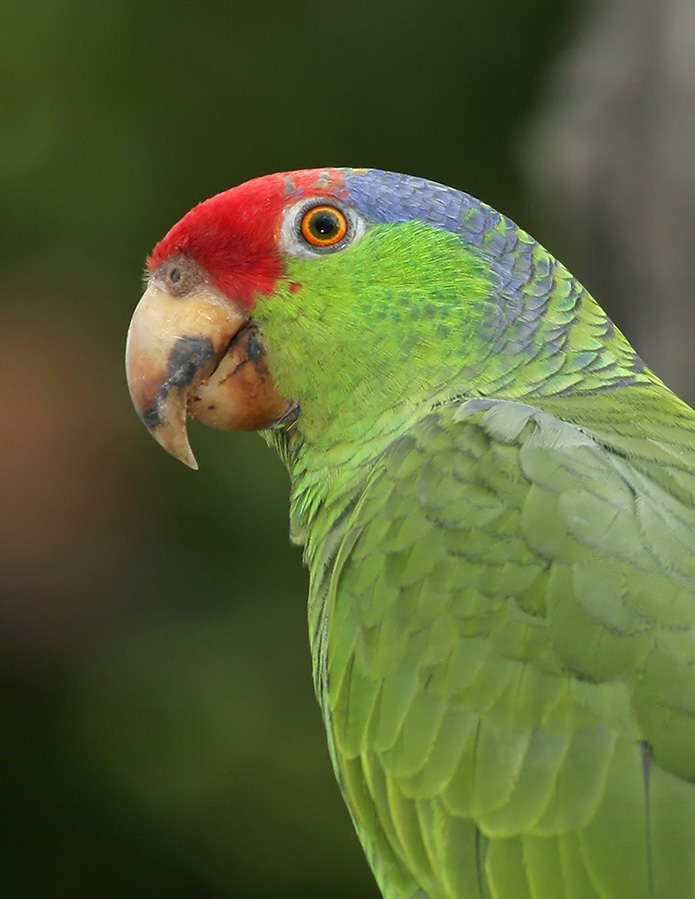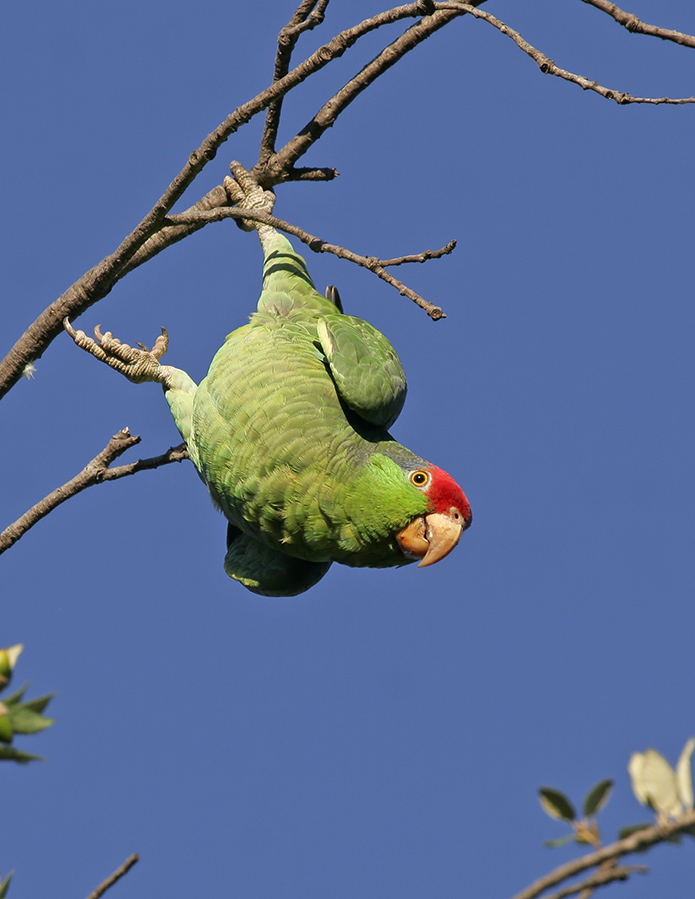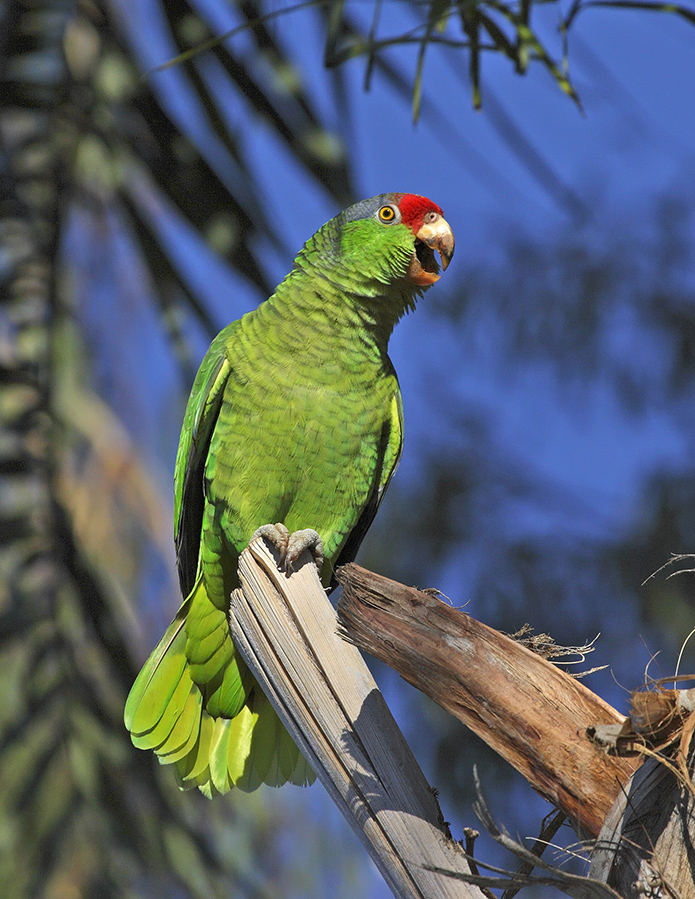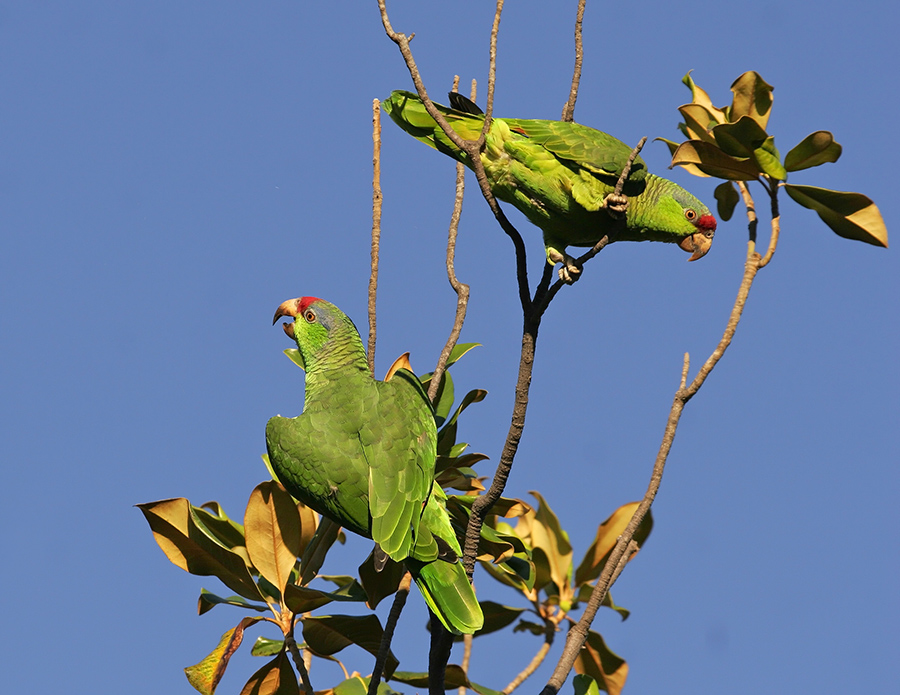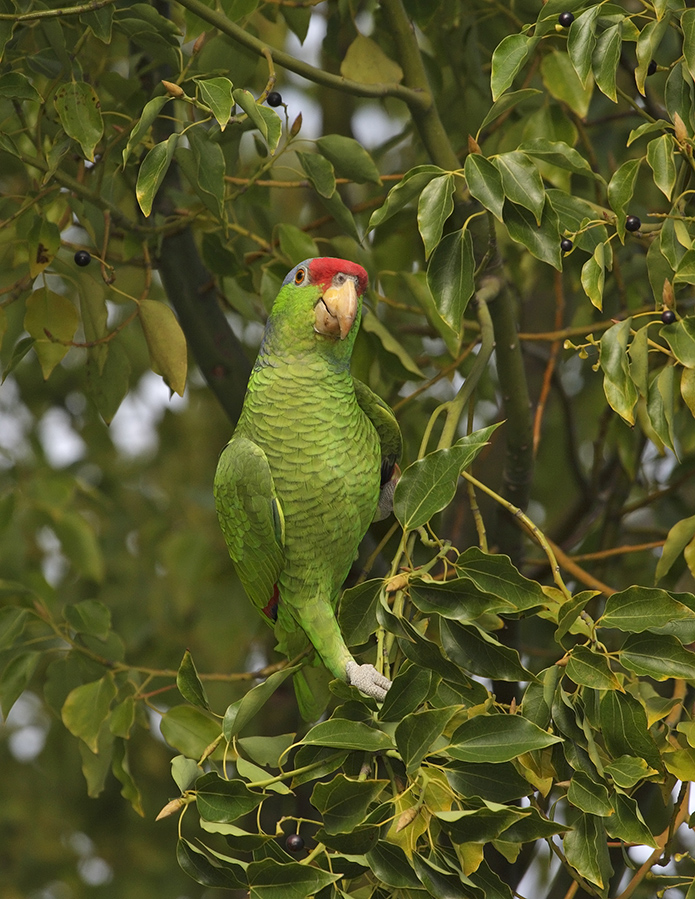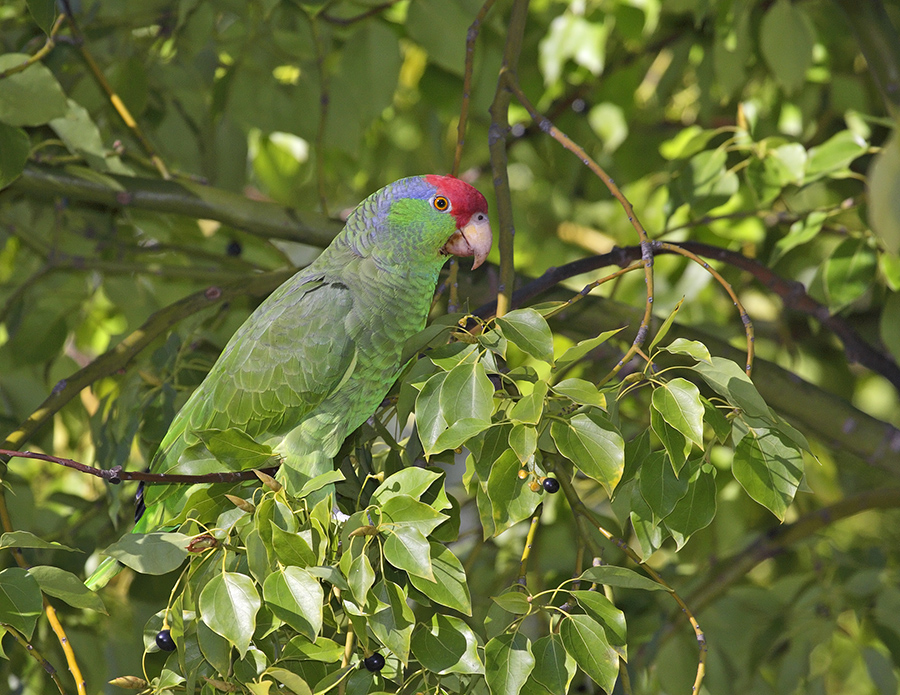Red-crowned Parrot
Scientific Name: Amazona viridigenalis
Species Authority: (Cassin, 1853)
Common Names :
Green-cheeked Amazon
Red-crowned Amazon
Red-crowned Parrot
Mexican Red-head
Native to: Belize, Guatemala, Mexico
Status: Endangered Species — IUCN Red List
The Red-crowned Parrot, also known as the Red-crowned Amazon or Green-Cheeked Amazon (Amazona viridigenalis), is a captivating bird species with a distinct red crown that makes it easily recognizable. This article delves into its natural habitat, dietary habits, and overall lifestyle in the wild.
Natural Habitat
The Red-crowned Parrot primarily inhabits the northeastern regions of Mexico, particularly in the lowland forests and woodlands of Tamaulipas and northeastern San Luis Potosi. These birds favor tropical and subtropical areas, thriving in regions that offer a blend of dense tree cover and open spaces for foraging.
Diet and Foraging Behavior
In the wild, the diet of the Red-crowned Parrot is quite diverse, reflecting the richness of their natural habitat. They primarily feed on a variety of fruits, nuts, seeds, and berries. These parrots are particularly fond of local fruits and are known to feed on the seeds of native trees such as figs and palms. Their strong beaks are adept at cracking open hard-shelled nuts, allowing them to access the nutritious kernels inside.
Red-crowned Parrots are also known for their foraging habits. They often travel in flocks and can be seen moving from tree to tree in search of food. These communal activities not only aid in finding food but also play a crucial role in their social interactions.
Habitat and Environmental Challenges
The habitat of the Red-crowned Parrot is under constant threat due to deforestation and habitat destruction caused by human activities. These disruptions have led to a decline in their natural food sources, pushing them to adapt to new food sources and sometimes venture into urban areas in search of sustenance.
Furthermore, the Red-crowned Parrot is a popular bird in the pet trade, leading to illegal trapping and trading. This practice has significantly contributed to the decline in their wild population, making conservation efforts crucial for their survival.
Conservation Efforts
Conservation efforts for the Red-crowned Parrot involve habitat protection, anti-poaching measures, and public education. By preserving their natural habitats and implementing strict laws against illegal trading, there’s hope for maintaining and potentially increasing their population in the wild.
The Red-crowned Parrot is a vivid example of the delicate balance of ecosystems and the impact of human activities on wildlife. Their striking appearance, coupled with their interesting dietary habits and social behavior, makes them an important species for conservationists. Protecting their habitats and ensuring a stable food supply are crucial steps in preserving these magnificent birds for future generations.
